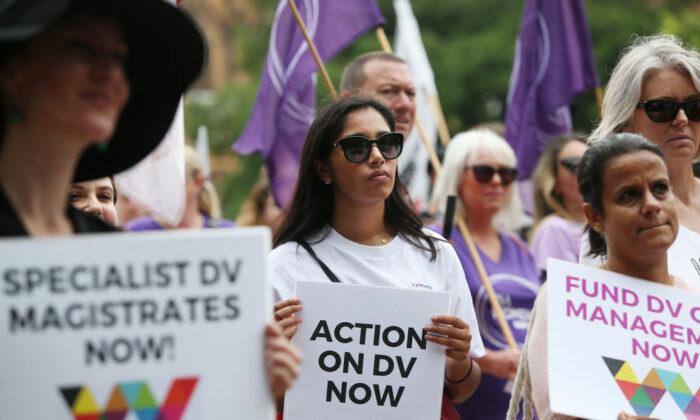While domestic violence against women is constantly mentioned by Australian politicians and duly highlighted by the national media, violence against men in this country is rarely reported and largely ignored by everyone. There is a constant pressure to phrase this issue only as a “male problem,” thus placing all the blame for such violence on Australian men as a collective group.
If the Labor Party wins the federal election on Saturday, it will appoint a domestic violence commissioner to help “women and girls.” In addition, Labor has committed $152 million (US$110 million) over four years to combat this form of violence and to fund 500 new community sector workers to support women.
Anthony Albanese, the opposition leader, wrote this on his Twitter account: “We need tangible action. Children have lost mothers, families have lost daughters.”
Prime Minister Scott Morrison doesn’t want to be left behind, and he has also promised to establish a commission to end domestic violence against women and girls.

However, since the 1980s, studies have indicated that men (and boys) are just as likely as women (and girls) to endure domestic violence.
About 15 years ago, for example, the Harvard Medical School released an important document to explain that domestic violence “involve both women and men as perpetrators.”
- A woman’s perpetration of domestic violence is the strongest predictor of her being a victim of partner violence;
- Among relationships with nonreciprocal violence, women were reported to be the perpetrator in a majority of cases;
- Women reported greater perpetration of violence than men did (34.8 percent vs 11.4 percent, respectively).
According to them, “One possible explanation for this, assuming that men and women are equally likely to initiate physical violence, is that men, who are typically larger and stronger, are less likely to retaliate if struck first by their partner. Thus, some men may be following the norm that ‘men shouldn’t hit women’ when struck first by their partner.”

But these findings would certainly not surprise Linda Mills, who is the Ellen Goldberg Professor of Law at New York University. She is a leading authority on the subject of domestic violence, and according to her, “Years of research, which mainstream feminism has glossed over or ignored, shows that when it comes to intimate abuse ... Women are capable of being as violent as men in intimate relationships. And women can be physically violent as well as emotionally abusive.”
Compared to abused women, male victims often experience a countless number of external barriers, especially when contacting the police and social services. Whereas women will find many safety nets to turn to, abused men have virtually none. And since their complaints often are not even taken seriously, there is almost no shelter for battered men and their children escaping from domestic violence.
As mentioned, our politicians believe that their anti-male tirades will have popular support among female voters. But judging from the messages I have received over the years, there are many women in our community who are very uncomfortable with gender politics being used to undermine essential legal protections for male victims of domestic violence.
Of course, it shouldn’t even be necessary to categorically state that I have no intention of minimising the serious problem of domestic violence against women. Certainly, there are men who grossly mistreat their partners and children. One must speak out loud and clear about violence against women— we must speak out loud and clear about violence against anyone.
And this is precisely why recognising that men can also be the victims of domestic violence is so important.





